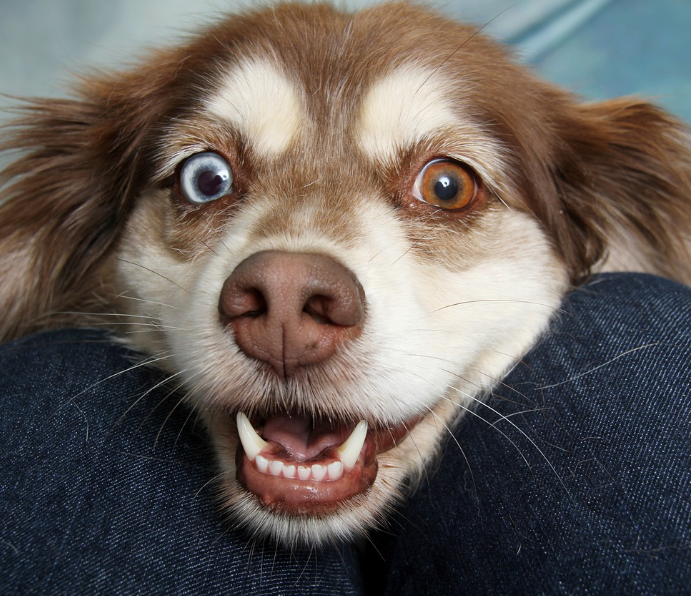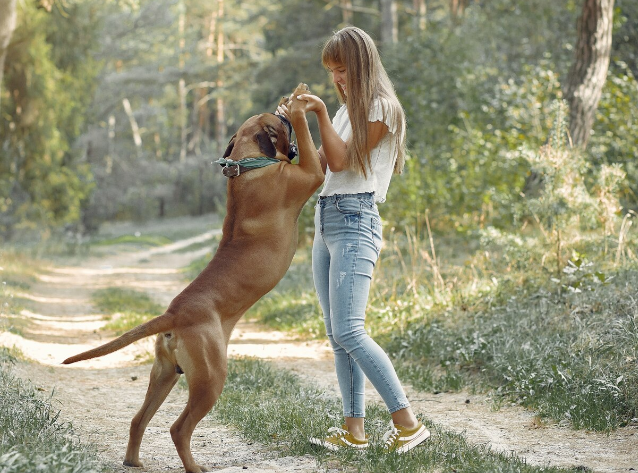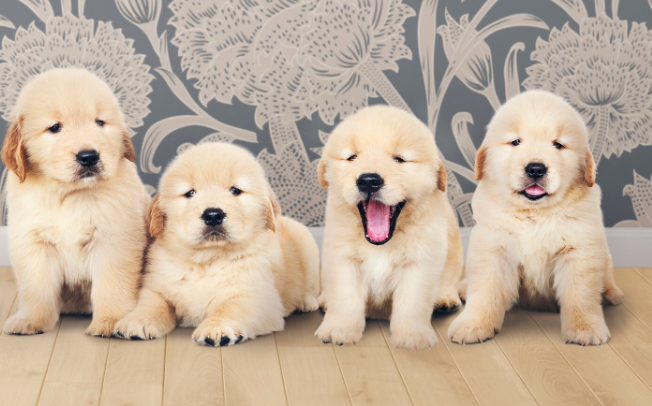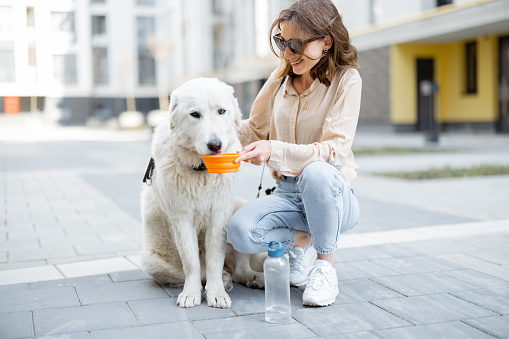
If you look for a definition of the term “arousal” online, you will likely find the following: “Arousal is the physiological and psychological state of being awoken or of sense organs being stimulated to a point of perception”.
The term “arousal” encompasses a wide range of emotional and physiological states; however, when talking about it, we usually refer to a state of being alert and responsive to stimuli in our environment. Sometimes, the triggers that cause arousal are positive, such as visual, and auditory stimuli, emotional connection, physical touch, or intellectual stimulation. Other times, they can be rather negative and include stress, anxiety, fear, and anger.
Having said that, the state of arousal is not particularly good or bad, it just shows our responsiveness and alertness to what is happening in our surroundings.

Arousal in Dogs
The state of arousal in humans is not much different from that in dogs. Arousal in canines also pertains to a state of heightened physiological and psychological activation, which can encompass a range of conditions from wakefulness and attentiveness to responses triggered by excitement, stress, or anxiety.
Similarly to humans, arousal in dogs can also be caused by positive or negative stimuli.
Being able to understand how our paw friends perceive their surroundings and respond to stimuli is an integral part of knowing them as individuals and learning how to interact with them and train them better.

Types of Arousal in Dogs Based on the Cause
Based on the cause of arousal, we can divide its types into several groups.
Arousal due to Excitement
This type of arousal typically occurs when a dog is enthusiastic or stimulated, such as during playtime, meeting other animals or new people, or when food is presented. We all know how excited our paw friends can become while anticipating in a play session or waiting for their favorite meal and watching it being served!
Arousal due to Fear
Dogs can become aroused due to fear or anxiety, especially as a type of coping mechanism with perceived threats or unfamiliar situations and environments. This can result in increased alertness, and cause excessive barking, or showing other types of defensive behaviors.
Arousal due to a Mating Instinct
During the breeding season, dogs can experience arousal, characterized by specific behaviors and physiological changes. They may exhibit mounting behavior, marking, roaming, pacing, whining, or barking more often.
Arousal due to Aggression or Frustration
As the name implies, this type of arousal is caused by negative stimuli, that are often related to the dog feeling threatened or challenged. Resource guarding can also be a cause of this type of arousal.
It is important to clarify that resource guarding can involve not only supplies such as food and toys but also the dog’s owner. Many dogs are highly protective of their owners, which can lead to displaying reactivity when someone is trying to approach them.
Arousal due to Exercise (Physical Stimulation)
Arousal due to physical stimulation is common in our furry friends. This response is natural in dogs, as it reflects their energy and enthusiasm during moments of active play or exercise.
Arousal during exercise can lead to increased heart rate, panting, and excitement associated with physical activity.

Signs of Arousal
To better understand arousal in our canines, we need to be familiar with both the causes of them and their signs.
Physical Signs & Body Posture
Posture
When aroused, a dog's posture typically becomes more alert and the body is often tense slightly forward.
Erect Tail
When in a state of arousal, dog tails often stand erect or are held high. This is a sign of alertness and can indicate excitement or interest in something.
Raised Hackles
Arousal can cause the fur along the dog's back and neck (known as hackles) to stand up. This response, known as “piloerection”, is a physiological reaction associated with emotional arousal, which can be triggered by both positive and negative stimuli such as excitement, tension, and fear.
Erect Ears
The dog's ears may perk up and be directed forward, which indicates attentiveness and readiness for action. This position allows the dog to better hear and respond to stimuli in the environment.
Dilated Pupils
Arousal can also lead to the dilation of a dog's pupils, making them appear larger than usual. Have you ever wondered why this happens during arousal? Dilated pupils are a form of a physiological response that allows more light to enter the eyes, aiding in better visual focus and readiness for action.
Behavioral Signs
Excitement
Arousal often manifests as increased energy and enthusiasm. Dogs may exhibit a higher level of activity, such as running around, jumping, and barking excitedly.
Playfulness
Arousal is commonly associated with playful behavior. Dogs may initiate play with other dogs or their beloved humans, showing their desire to interact and engage socially.
Some dogs may start pawing at the ground, at objects, or even at their owners when they are aroused to express their playfulness and willingness to receive attention.
Our paw friends often get aroused when they see us after a long day being alone at home. Engaging in playful behavior is a way for them to show their affection and love.
Pacing / Restlessness
Some dogs may exhibit pacing or restlessness when aroused. This behavior can indicate anticipation or eagerness, as the dog may be seeking something stimulating or exciting.
Jumping & Mouthing
While playful jumping and mouthing are common in dogs, they can quickly escalate when a dog is aroused. These actions often occur during play sessions as a way for the dog to engage and interact.
Vocalization
Arousal may cause increased vocalization in dogs and manifest in barking, whining, or other types of vocalizations to express their excitement, alertness, or desire for attention.
Muscle Tension
When a dog is aroused, there is a noticeable tension in their muscles indicating readiness. It is particularly apparent in the legs and neck, indicating readiness for movement.
It is important to understand the signs of arousal in our paw friends to interpret their behaviors and learn to respond appropriately. However, the dog’s personality and temperament, as well as the specific situation should also be taken into account. Different dogs may show different types of arousal based on their temperaments, experiences, and environment.

How to Manage Arousal in Dogs
Learning to identify arousal is the first step in the process of knowing our paw companions. Learning how to manage arousal is the next step, which also helps turn them into well-mannered, calm, and confident society members.
Environmental Management
Environmental management is a broad term, as it can include all the factors in the dog’s surroundings, that may affect their behavior. In the context of addressing arousal, we will use the term to describe exposure to overstimulating environments.
It is essential to gradually acclimate your canine to new experiences to prevent them from becoming overwhelmed. You might have already heard the term “desensitization”, as we have used it in many of our articles that cover dog training and behavior. Desensitization is related to gradual exposure to stimuli by starting at a low level and adding distractions step by step.
This approach helps dogs get accustomed to the stimuli in their surroundings in a gradual way, enabling steady and more consistent progress.
Environmental management can also include adjusting your home to ensure your canine has their own personal space. Just like us, dogs also need their designated area where they can retreat when they feel overwhelmed.
Positive Reinforcement
Counter-conditioning goes hand in hand with desensitization. It includes rewarding the dog (food is primary positive reinforcement tool) for remaining calm in the presence of the stimuli. You should not get frustrated if your furry friend gets agitated and aroused. With simple adjustments like decreasing the intensity of the stimuli, and resuming the training session, you can make great progress.
It is important to avoid rewarding over-excitement or anxiety, as this can inadvertently reinforce these behaviors.
Furthermore, make sure you know your paw friend very well, including what treats they like. This knowledge will help you opt for your paw friend’s favorite treats, which will have the biggest impact during the training sessions.
Routine and Predictability
Establishing consistent routines for feeding, walking, and playtime can help provide a sense of stability. This, in turn, can assist in reducing arousal due to negative experiences.
By knowing what to expect each day, dogs feel more secure in their environment. Their susceptibility to arousal or negative reactions triggered by unfamiliar or distressing situations is likely to decrease.
Basic Obedience Training
We highly recommend teaching your furry companion basic obedience commands like “sit,” “stay,” and “look at me” to help redirect their focus to you during moments of high arousal.
They will also contribute to improving your canine’s impulse control, which is crucial for their behavior, especially in public, in environments with a lot of distractions.
Exercise and Enrichment
Regular physical and mental exercises, including interactive toys, will contribute to managing your dog’s energy levels and decreasing arousal moments. When working on your dog’s exercise schedule, it is important to consider their individual needs, based on their health, age, breed, and lifestyle.
For example, breeds known for high energy levels, like Border Collies, Golden/Labrador Retrievers, and Australian Shepherds, may need more energetic activities compared to less active breeds.
When it comes to age as a factor, remember that puppies have different exercise needs than adult or senior dogs. Younger dogs may have bursts of energy requiring frequent play sessions, while older dogs may benefit from gentler exercises that won’t put strain on their joints.
Additionally, factors such as whether your paw friend primarily lives indoors or has access to outdoor spaces also affect their exercise requirements. Dogs living in apartments might need more structured playtime or walks to meet their exercise needs, compared to those with access to large open areas.
By adapting your furry buddy’s exercise schedule to their individual characteristics and requirements, you can help ensure they remain healthy and well-balanced.
Calming Techniques
Techniques such as massages, deep pressure therapy, and calming music help reduce arousal and promote calmness.
Aromatherapy has also proven a great tool aiding in addressing stressful stimuli in the environment.
You can learn more about holistic approaches in dog treatment and calming techniques from the articles linked below:
Holistic Approaches to Dog Health: Non-Traditional Treatments
Classical Music for Calming Effect on Dogs
Why and How to Give Your Dog a Massage | Ask Our Expert
By recognizing the signs of arousal and implementing appropriate management techniques, dog owners can ensure their beloved paw friends remain happy, healthy, and well-adjusted. Knowledge of arousal not only enhances the well-being of dogs but also contributes to strengthening the bond between them and their beloved humans.













